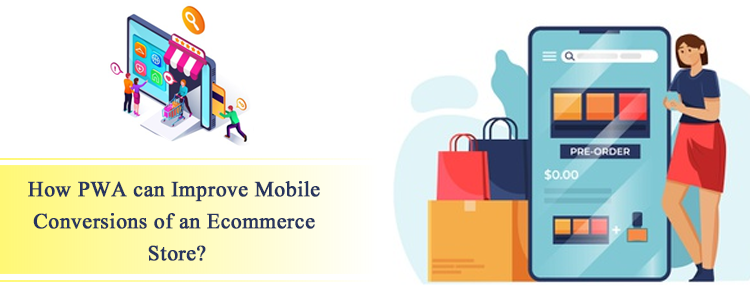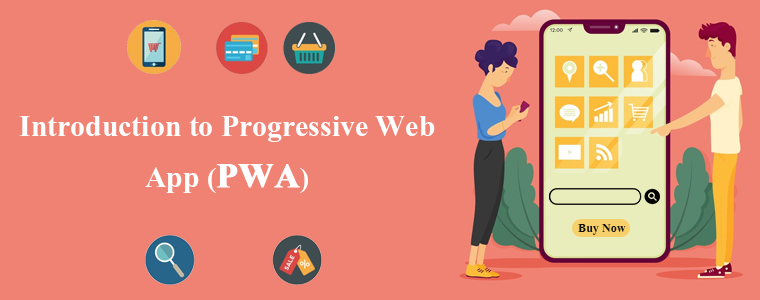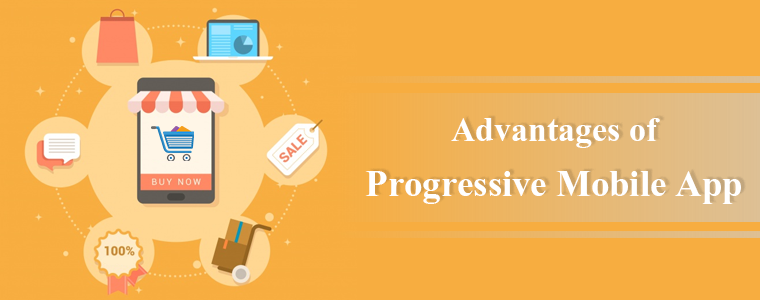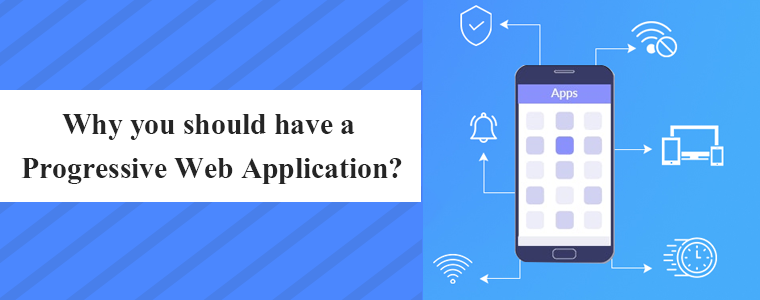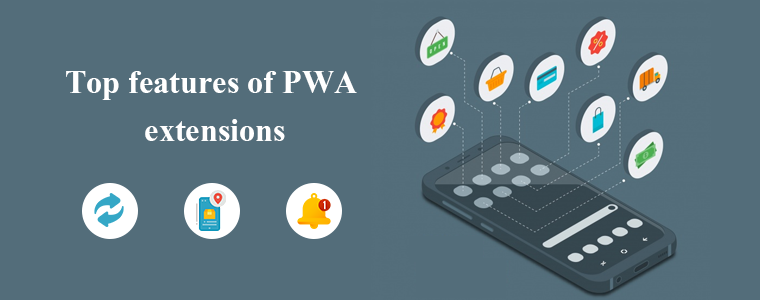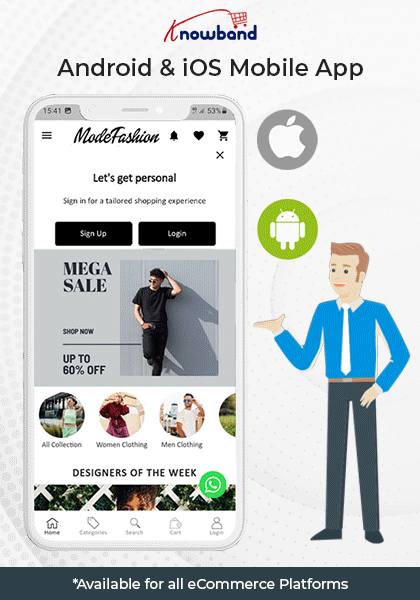Nowadays people are spending a lot more time using mobile devices to access the internet and consuming twice the data they consume on desktop websites. That goes for online shopping standards as well. Using an eCommerce website to bring sales is challenging when you have flaky internet connectivity. And, asking users to install a mobile app is again a conversion killer. PWA (Progressive Web App) fits in between the native mobile app and the website browser and is more likely designed to boost the mobile conversions for eCommerce stores.
Progressive Web App is the new must-have format for the mobile branding of your business. PWA mobile apps have overcome the most alarming problem of distribution. Do you ever go to your browser for Google Maps navigation? Probably not! Research says that most of the users, around 87% choose to browse on native apps. That makes it mandatory to have the app installed on the user’s device.
PWA mobile app gets derived directly from the mobile browser of the website and no need to visit any third-party app store or medium to install the app. Actually, whenever any user opens a PWA active website on a mobile browser, a prompt message asks to “Add App To Home Screen”.
App developers and service workers (Script files) in combination create PWAs for offering a dynamic, smooth user experience while accessing the content through a website/web-app.
Introduction to Progressive Web App
The Progressive Web Applications, also known as PWA are enhanced versions of web apps, developed with javascript. PWAs have extra capabilities like the user can access them offline and also receive push notifications based on the marketing standards.
PWA improves your website’s performance, security, accessibility, and SEO features. It enhances your reliability and workflow. They allow you to work offline and on flaky networks. Progressive web apps are fast and engaging. The PWA’s have seamless navigation and are packed with smooth animations, jank-free scrolling which makes it faster.
Major Advantages Of Progressive Web App
In order to create efficient web applications, progressive web applications (PWAs) are more of a technique that includes a mix of technologies. With an enhanced user interface, individuals can spend more time on websites and see more advertising. They prefer to buy more, and more likely to return regularly with warning notifications.
#1. Reliable Performance
A typical website forces users to wait while it is busy making trips to the server, doing nothing. Each request from the network to fetch an asset or piece of data passes through a service worker, who first checks if the answer to a specific request is already in the cache. As users immediately get real content, even on a bad link, they trust the app more and see it as more reliable.
#2. Fast Loading
This UI isn’t flaky. Scrolling is seamless and the app reacts to user interaction easily. Your Progressive Web App will naturally be faster than the native apps, being lightweight & having a fast loading mechanism. This provides the app users with an exceptional user experience that keeps the services at par.
#3. More Engaging
It looks and feels like a native application. Over the user’s home screen, a PWA can earn a location. By offering a full-screen work environment, it provides a native app-like experience. To keep users active, it makes use of push notifications.
#4. Offline Usage
The pattern of “offline first or “cache first” is the most common technique for serving the user with content. If a resource is cached and offline accessibility can be checked before you download the content. Download it if it’s not already in the cache and save it for future use.
#5. Push Notifications
Push notifications effectively increase the conversion rate of your eCommerce store. PWAs allow the owners of the store to configure and submit unlimited push notifications. They have in-built functionality to automate & schedule them. Using catchy titles & graphics in your notifications can do wonders.
Why you should have a Progressive Web Application?
While a PWA is not a must-have functionality but it is a way to improve your relationship with current and potential customers while also overcoming the difficult challenge of visitors driving away from the website.
Many people become oblivious to the prompts to enter an email list and sometimes do not take the next step to open and read the emails, but you can build real brand loyalty if you can get a customer to use your Progressive Web App.
Google is supporting the PWAs since 2015 and now iOS also allowing them on their web browser. Google scores the Progressive Web Applications better while crawling and other practices. Various Google Chrome extensions are created to support the PWAs.
PWA can be a good idea if you are starting up your new website. It makes sense to distribute your web app to users, in the beginning, to get their feedback before creating your responsive mobile app.
The Progressive Web App cannot be replaced with responsive mobile applications but in a way when you are planning to launch your mobile app, it is a good option to start with.
KnowBand developed PWA for various eCommerce Platforms:
The Progressive Web App Builder extension is available for almost all major eCommerce platforms. The store admin just needs to choose the right plugin and install it to follow the simple guideline for the configuration.
Top features of Progressive Web App extensions
The below-mentioned features are the most prominent ones and are all put together and our Knowband experts developed the Progressive Web Application. The app is lightweight and faster loading and enhanced performance. The PWA Mobile app supports multi-lingual and various currencies that allow you to expand your business globally.
1. Change the Look and feel of the PWA- The store owner can change the colors, add a brand logo and various designs to make it look good. Even the complete home screen design can be edited and changed via a DIY editor. The changes will be reflected in the actual app anytime.
2. Featured Product Listing- Designed in a way that the user can add different product/category-based elements. The store admin can showcase the best sellers, featured products, recently purchased, etc. on the home screen.
3. Easy Installation- The users do not need to visit any third-party app store. Instead, the PWA Mobile App can be added on the phone directly by opening the website on a mobile browser.
4. Reliable and Engaging- The eCommerce PWA Mobile App works flawlessly under no/slow internet connectivity. Even in offline mode, the cached data & previously loaded pages make the content available to app users.
5. E-mail and Social Login- The store owner can allow users to sign up by adding an email address or with their social media accounts.
6. All Payment and Shipping Method Support- Customer often bounces back due to limited shipping and payment methods but with PWA, this is not a challenge anymore. All website payment and shipping methods will be actively functioning on PWA Mobile App.
7. Offline Mode- Even without an internet connection or on a sluggish network, your PWA App will work properly. Users will not have to rely on the internet at all times to shop for app items.
8. One-Page Checkout, Unlimited Push Notifications, Live Synchronization, and Order Tracking like features are the additional advantages of PWA.
9. Cross-selling– It allows you to showcase related products to improve sales on PWA. It also allows the store manager to select the CMS pages from the website and will be optimized automatically.
Here is a list of benefits offered by PrestaShop PWA (Progressive Web App).
We have developed the PWAs for many clients and some of the success stories for 2020 are discussed in our previous article.
Conclusion:
Turn the online eCommerce website into the PWA Smartphone App and give mobile visitors a seamless web shopping app. The highly engaging PWAs can be launched from the home screen as you can add an icon for it and they even send push notifications. This is a great example of technology development and has a lot of scope in future advancement.
Progressive Web Apps are still in their infancy, as described, but it’s an exciting time to experiment with the methodologies behind them and see how well they can relate to your web applications.
Please feel free to comment on-thread if you have input on places that you would like to see covered.
Recommended Reads:

